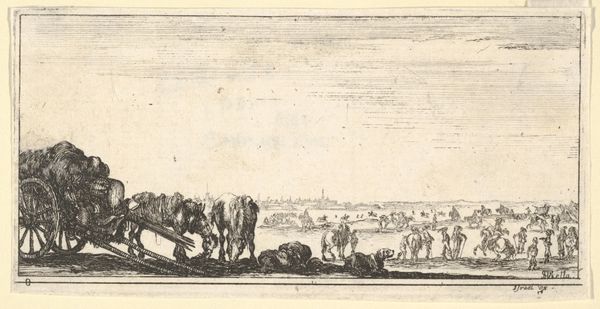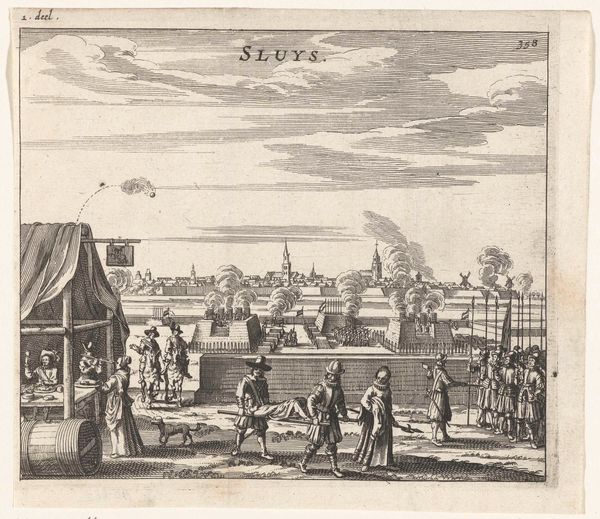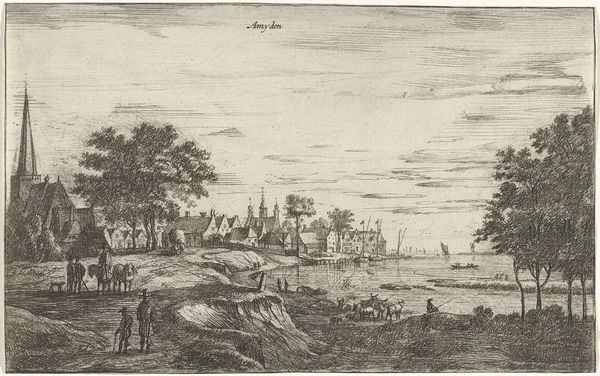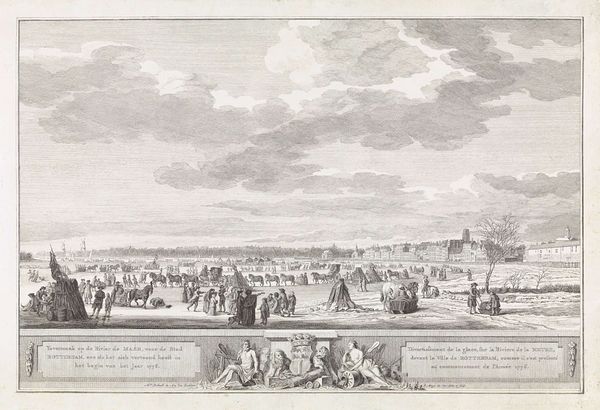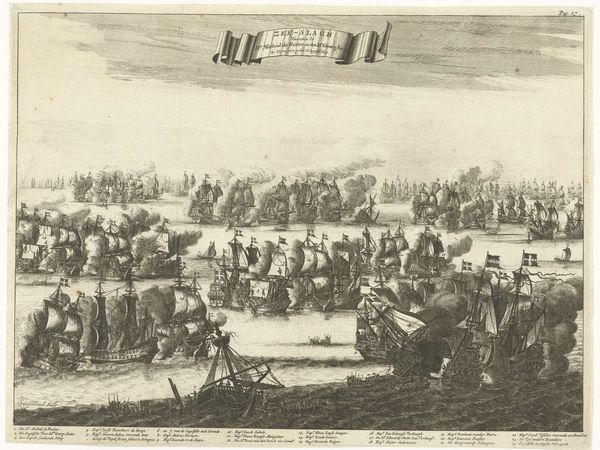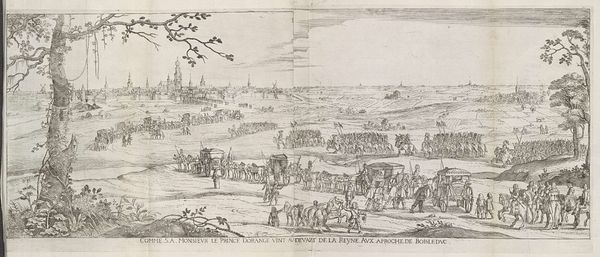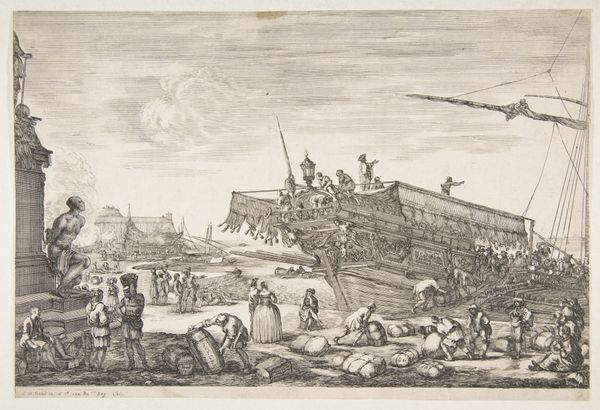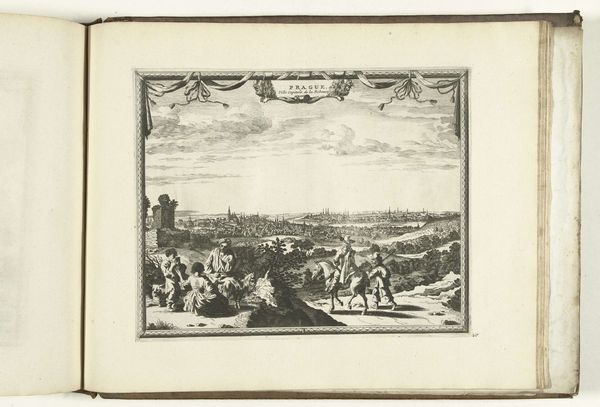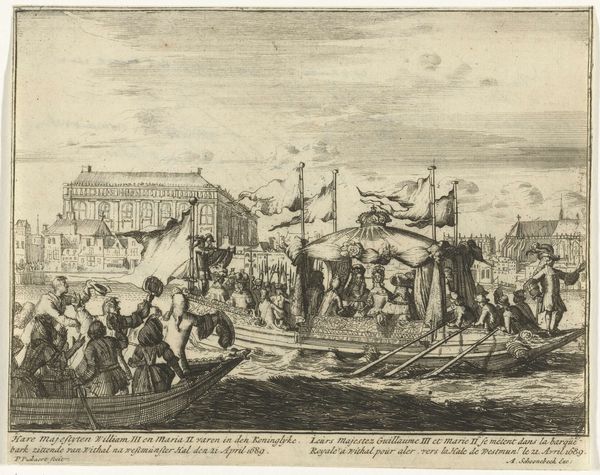
print, engraving
#
dutch-golden-age
# print
#
landscape
#
line
#
history-painting
#
engraving
#
realism
Dimensions: height 270 mm, width 830 mm
Copyright: Rijks Museum: Open Domain
Editor: This engraving, "Departure of the Spanish Garrison from Hulst, 1645" by Pieter Nolpe, captures a really specific historical moment. It’s almost panoramic in its scope. I find myself wondering what daily life would have been for people during this particular conflict and how an event like this affected the culture. How would you interpret this work? Curator: Given its time, this engraving plays a significant public role. Remember that prints like this circulated widely, shaping public opinion about the Dutch Revolt and the Eighty Years' War. Nolpe presents the Spanish leaving Hulst, a Dutch victory, as orderly, but doesn’t that also imply the conflict continues? Do you think that changes our understanding of how history is perceived? Editor: Definitely. Presenting it as orderly almost normalizes the political instability. It seems more about conveying control, or even making the conflict seem commonplace for public consumption. It is not necessarily propagandistic, it normalizes displacement and militarized landscape. Curator: Precisely! Think about the context: the war shaped Dutch identity. How were victories and defeats presented to solidify a national narrative? Were prints such as these ever questioned or challenged at the time? What alternative forms of information were out there for people? Editor: So, this wasn't just art; it was a form of news, carefully curated for public consumption. I see it more clearly now as a statement about power, more than just an account of this particular withdrawal. I hadn't considered how accessible such images could be to the masses. Curator: And with accessibility comes responsibility and consequences, for both the artist and those in positions of power. I’m left thinking about the effect on Dutch national identity. What have you discovered through this? Editor: I now understand that art and history painting can be intertwined with nation-building. And I understand the ways public mood can affect production of artistic and historical renderings. Thanks so much.
Comments
No comments
Be the first to comment and join the conversation on the ultimate creative platform.

